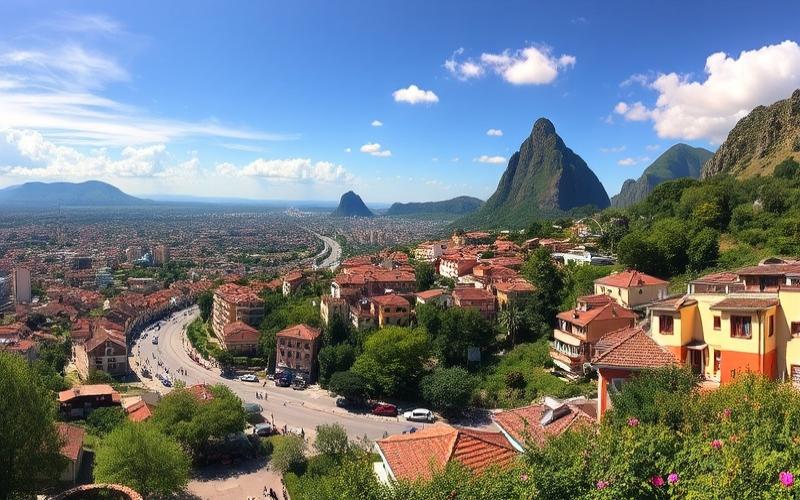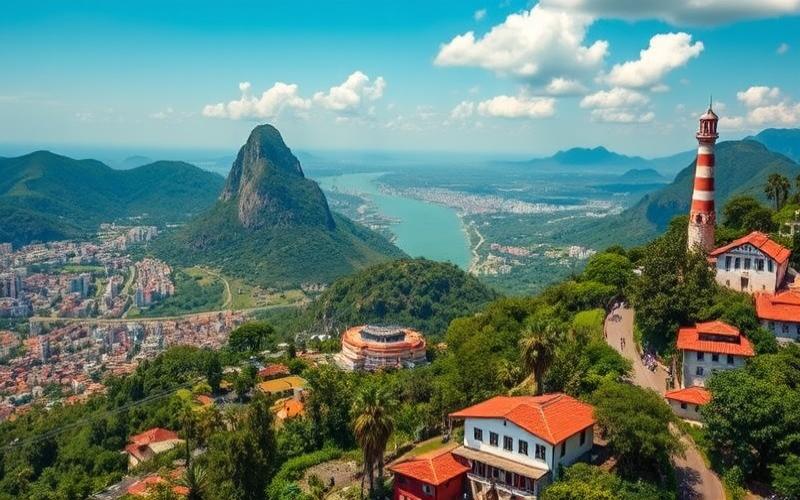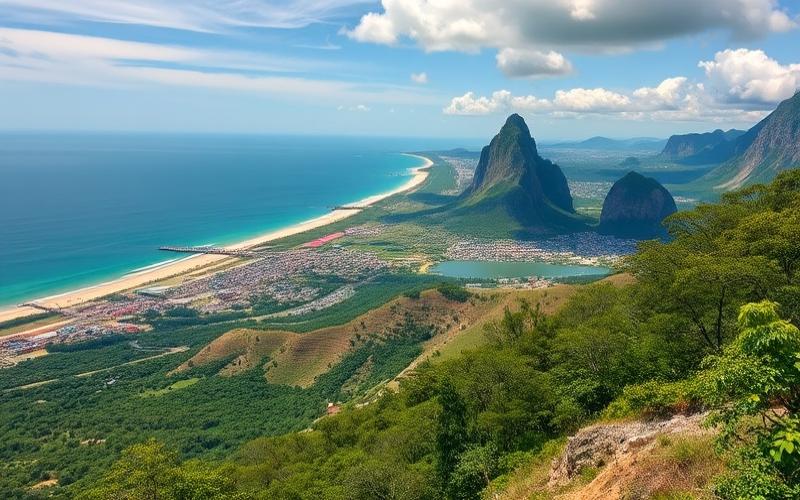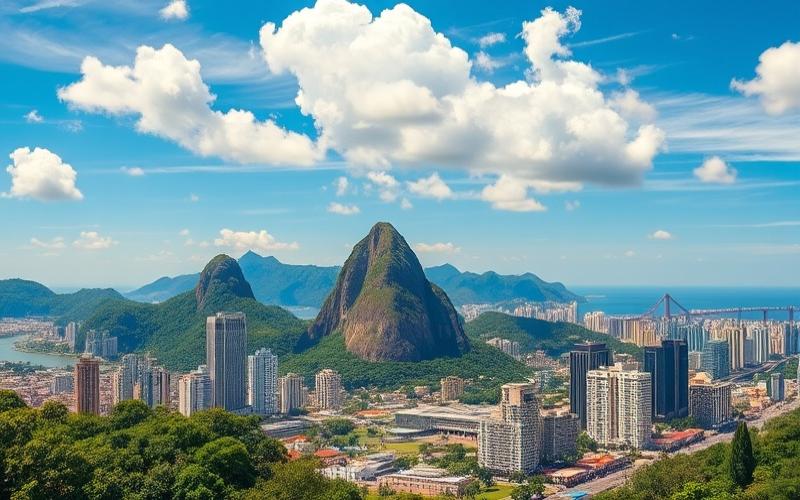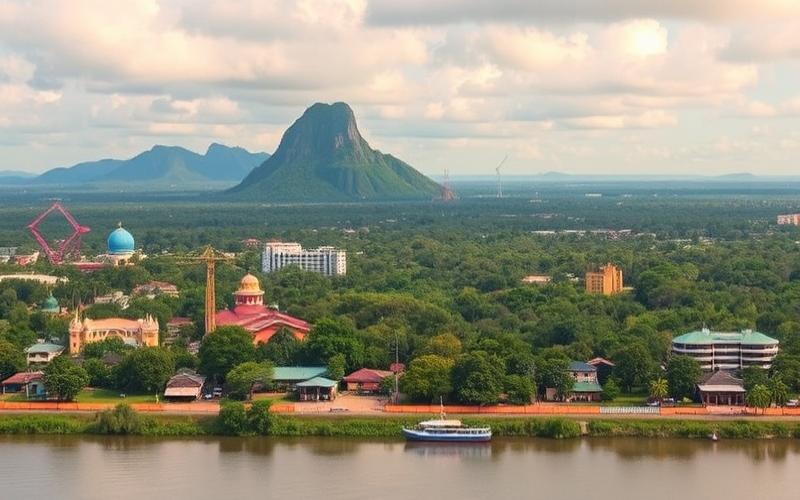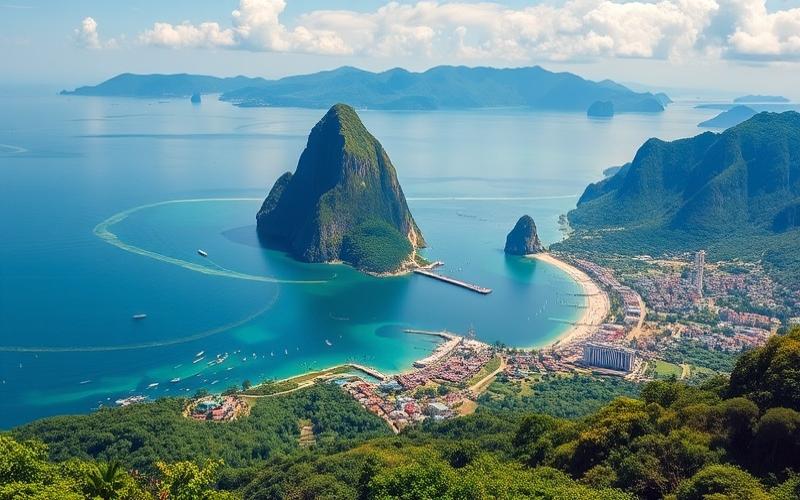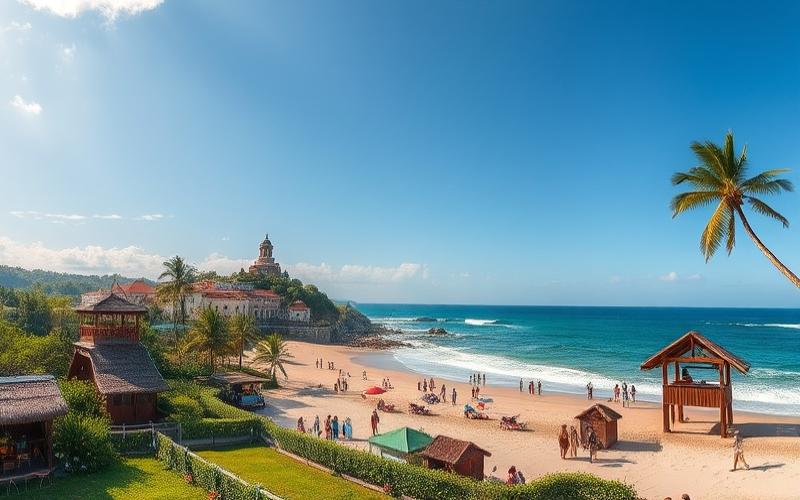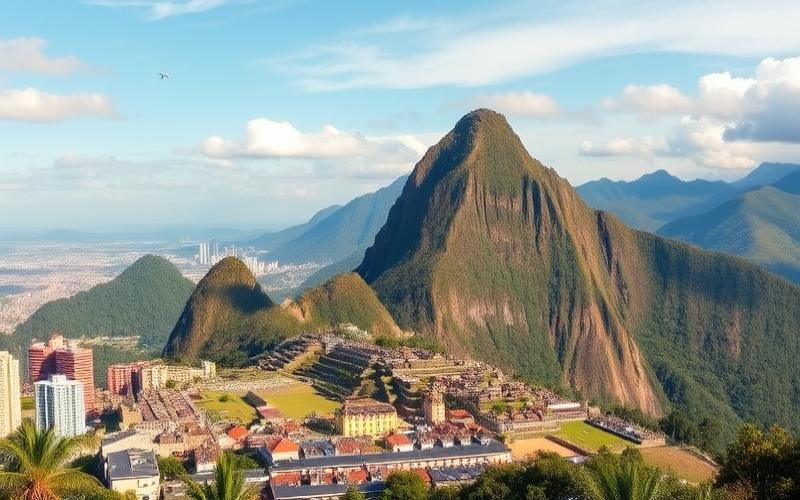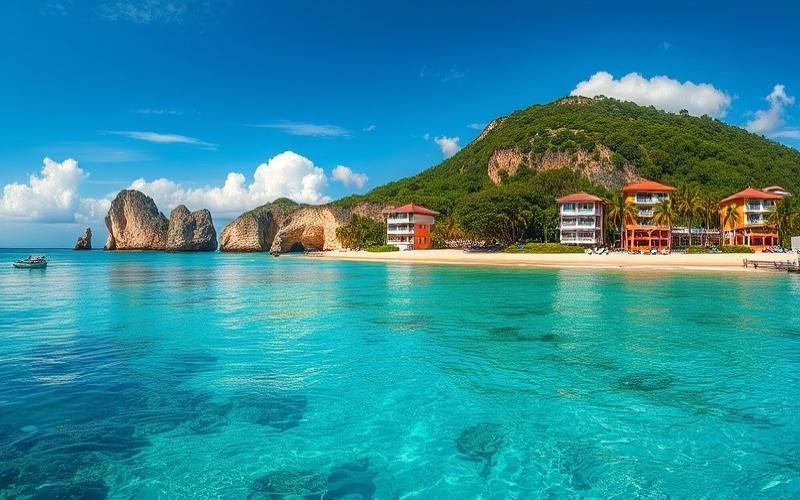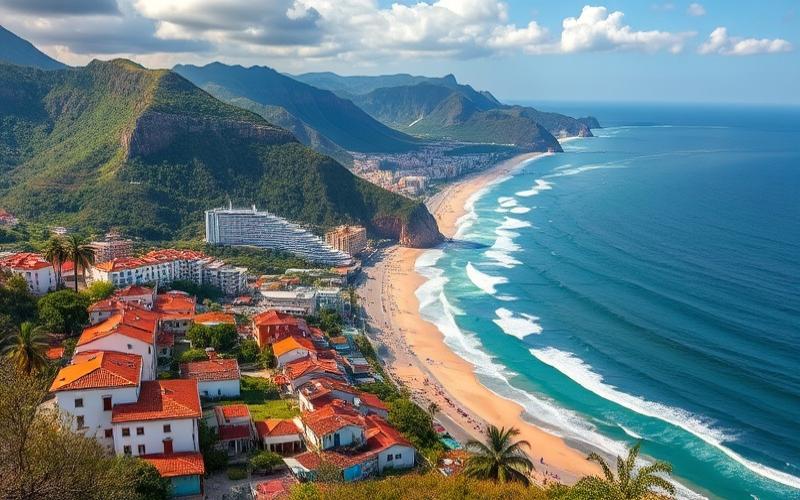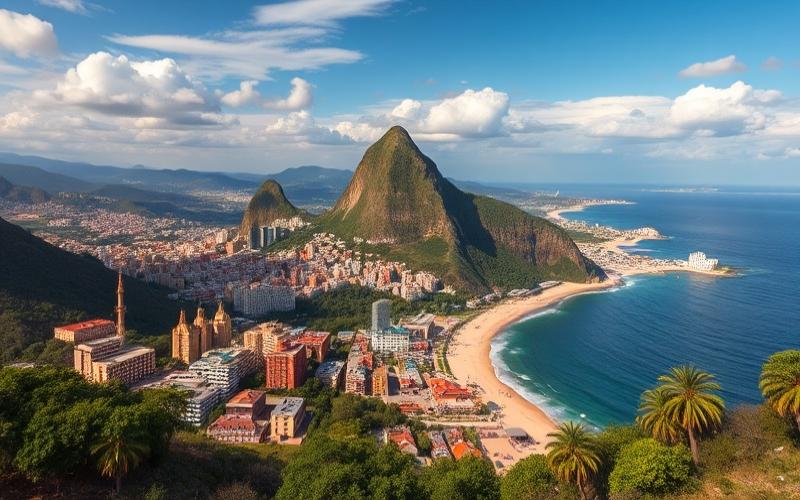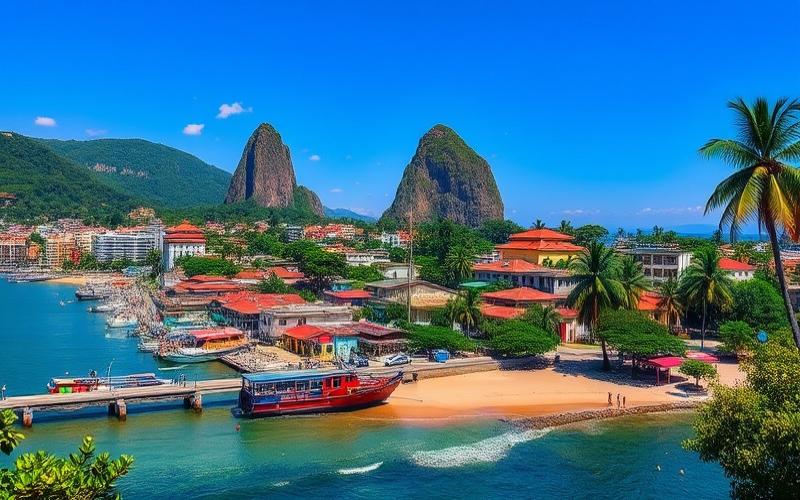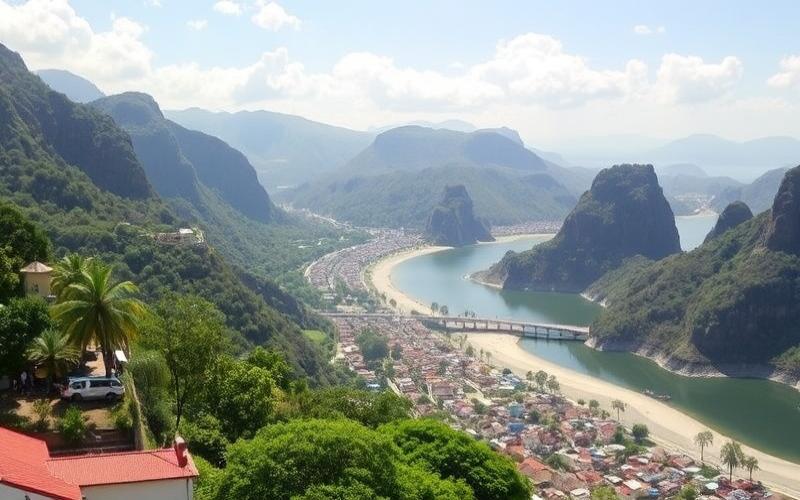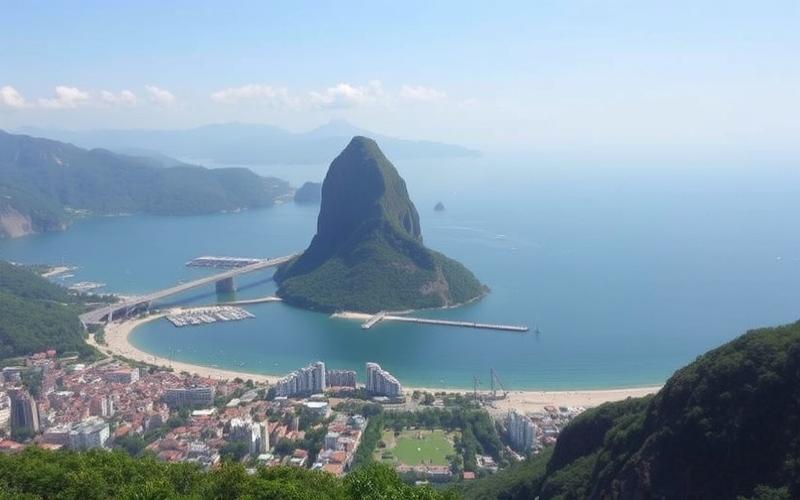
 Published on and written by Cyril Jarnias
Published on and written by Cyril Jarnias
Airbnb vs Long-Term Rentals in Brazil: Which Investment Should You Choose?
In a constantly evolving real estate market, choosing between investing in Airbnb and pursuing long-term rentals across Brazil becomes a crucial decision for property owners looking to maximize their returns.
While some cities offer attractive profit potential due to tourist demand, others present enticing opportunities with long-term tenants.
This article examines the relative profitability of both options by evaluating market trends, tax benefits, and cultural particularities of several key metropolitan areas such as Rio de Janeiro, São Paulo, and Salvador de Bahia.
Introduction to the Profitability Study Between Airbnb and Long-Term Rentals in Brazil
The Brazilian real estate market shows recovery dynamics with a housing index reaching a record 176.1 points in July 2025, after averaging 134.9 since 2012, signaling cumulative appreciation of residential prices over the recent decade. In value, the residential market is estimated at USD 59.61 billion in 2024 (USD 56.56 billion in 2023) and is expected to grow at a CAGR of approximately 5.4% until 2029. On the commercial side, the size reaches USD 63.67 billion in 2024, with faster projected growth (CAGR ~8.7% until 2029). In this context, price stabilization in major metropolitan areas and increases in tourist zones enhance the appeal of rental strategies, while highlighting strong regional disparities.
The rise of short-term rental platforms like Airbnb aligns with several trends: recovery of domestic and international tourism, digitalization of practices, and pursuit of higher returns in coastal markets and cities with high event demand; this dynamic has resulted in notable appreciation of properties in Brazilian tourist destinations. The growth of platforms has also professionalized short-term rental management (co-hosting, concierge services), facilitating entry for individual investors, particularly in attractive secondary markets (e.g., Florianópolis, Curitiba, Belo Horizonte).
Economic and Social Factors Influencing Profitability (Short-Term vs. Long-Term):
- Growth and Real Estate Prices: rising prices increase entry costs and sensitivity to net rental yield; recent peaks heighten the requirement for positive cash flow for investors.
- Demand Dynamics: structural housing deficit and support for affordable segments stimulate long-term rental demand, ensuring more stable occupancy. Conversely, short-term benefits from tourist and seasonal flows, more volatile but potentially more lucrative in hotspots.
- Local Economic Cycle: expected strength in the commercial real estate sector and correlated urban activity support the attractiveness of metropolitan centers, beneficial to both strategies but with different risk profiles.
- Local Regulations: tourist municipalities tend to regulate short-term rentals (quotas, registrations, taxation), modulating relative profitability; long-term generally offers better regulatory predictability.
- Operational and Tax Costs: short-term involves higher operating expenses (cleaning, concierge, platforms) and active management; long-term presents lower recurring costs and sometimes simpler taxation depending on local regimes.
- Occupancy and Price Risks: short-term is sensitive to seasonality, macro-touristic risk, and competitive supply shocks; long-term is more exposed to default and turnover risks but offers more regular cash flows.
Advantages and Challenges for Property Owners
Short-Term Rentals (Airbnb and similar)
Advantages:
- Higher potential income in tourist areas and during event peaks.
- Flexibility in property use and dynamic pricing.
- Possible geographic diversification via studio/1-bedroom formats in attractive secondary cities.
Challenges:
- Occupancy volatility and strong seasonality.
- Higher operational and management costs; dependence on platforms.
- Exposure to local regulatory changes.
Long-Term Rentals
Advantages:
- Rent stability and cash flow visibility, supported by structural demand (affordable segment).
- Lower operating costs and simplified management.
- Less sensitivity to tourist cycles.
Challenges:
- Gross yields often lower than short-term peaks.
- Contractual rigidities and default risk; indexations sometimes lagging inflation.
- Property valuation dependent on local price trends, in a market with marked disparities.
Summary Comparative Table
| Criterion | Short-Term (Airbnb) | Long-Term |
|---|---|---|
| Objective | Maximize income per night | Maximize occupancy rate |
| Potential Yield | High in tourist areas | Moderate but stable |
| Income Volatility | High (seasonality) | Low to moderate |
| Operating Costs | High (cleaning, management) | Low to moderate |
| Regulatory Risk | High (tourist cities) | Low to moderate |
| Macro Sensitivity | Tourism/events | Employment/local demand |
| Entry Barriers | Intensive management | Initial capital/contracts |
| Property Valuation | Driven by hotspots | Driven by local fundamentals |
Useful Market Statistics and Benchmarks
- Housing Index: 176.1 points (record, July 2025); 2012–2025 average: 134.9.
- Residential Market: USD 59.61 billion (2024); USD 56.56 billion (2023); CAGR ~5.4% until 2029.
- Commercial Market: USD 63.67 billion (2024); CAGR ~8.7% until 2029.
- Price Trends: stabilization in São Paulo/Rio, moderate growth in secondary cities, strong appreciation in tourist destinations.
The Airbnb vs. long-term comparison is crucial for balancing expected yield and cash flow volatility in a growing but geographically heterogeneous Brazilian market.
Optimal allocation depends on the city/segment pair: stabilized metropolitan areas and affordable segments favor long-term, while tourist zones and dynamic secondary markets support short-term.
Price trajectories and market depth indicated by recent sizes and indices help calibrate risk and expected portfolio performance in Brazil.
Good to Know:
The Brazilian real estate market is undergoing significant transformation, influenced by the rise of short-term rental platforms like Airbnb, which recorded 25% growth over the past two years. Economic factors such as inflation and low interest rates, along with flourishing tourism, are attracting more investors to Airbnb rentals, which often offer higher yields due to higher daily rates. However, this market also faces challenges like strict regulation in some cities and the need for more intensive management. In comparison, long-term rentals ensure stable income and reduce vacancy risk but may prove less profitable in high tourist demand areas. For Brazilian property owners, the decision between Airbnb and long-term rentals hinges on analyzing local trends and diversifying their real estate portfolio, and it is crucial for maximizing profitability in an uncertain economic context.
Analysis of Numerical Data for Seasonal Rental Profitability
Data indicate that seasonal rental via Airbnb is generally more profitable in the short term in Brazilian tourist cities with high demand (e.g., Rio), but with greater income volatility and higher management costs compared to long-term rentals, which offer more stable flows but often lower gross monthly yields in these same markets. The optimal decision depends on occupancy rates, ADR (average daily rate), local seasonality, and costs (platform fees, cleaning, concierge, taxation), which vary from city to city.
Key Numerical Points to Consider
- Occupancy Rate (annual average) and nights booked per year: direct indicators of seasonal rental fill rates by city.
- Average Revenue per Night (ADR) and average annual revenue: basis for gross profitability projection and comparison with long-term monthly rents.
- Seasonality: concentration of demand peaks and off-months influencing cash flow and treasury.
- Size and maturity of local market (number of active listings) and national sector dynamics.
- Specific short-term vs. long-term costs: platform fees, cleaning/turnover, concierge, vacancy, furniture CAPEX (short-term) vs. lower intermediation fees but default/turnover risks (long-term).
Comparative Table — Key Indicators for Seasonal Rentals (Airbnb)
| City | Average Occupancy | ADR (Average Rate/Night) | Annual/Monthly Short-Term Revenue | High Season | Market Size |
|---|---|---|---|---|---|
| Rio de Janeiro | 59% | BRL 337 | BRL 69,470/year; ~BRL 5,784/month | January; strong seasonality | 31,533 to 45,723 active listings (2024–2025 period) |
| Rio de Janeiro (other source) | 44% | USD 103 | USD 12,676/year (est.) | High dispersion per host | Very competitive market |
| Lins (State of SP) | 22% (off-month), ~27–42% neighbors | USD ~40 ADR (off-month) | Monthly revenue ~USD 271 (off-month) | Strong regional variability | Small market; depends on micro-destinations |
Interpretation Notes
- The two Rio measurements differ (occupancy 59% vs. 44%) due to distinct methodologies and time windows; it is prudent to use a range for scenarios.
- Secondary markets (interior of São Paulo) show low monthly revenues and volatile occupancy, reinforcing the relative advantage of long-term outside tourist hubs.
Profitability Projection — Methodological Framework
- Short-Term (Airbnb) — gross revenue = ADR × nights sold; net margin = gross revenue − (Airbnb fees 3–15%, cleaning/laundry, consumables, concierge 15–25% if outsourced, utilities, IPTV/Internet, insurance, maintenance, furniture/renewal, seasonal vacancy, local taxation).
- Long-Term — monthly gross rent × 12; net margin = rent − (vacancy 3–8% depending on city, management fees 8–10% if agency, routine maintenance, condo fees/IPTU, insurance, rental taxes). Lower furniture CAPEX; lower tenant turnover.
Table — Typical Profitability Comparison by City (indicative example from observed data)
| City | Mode | Calculation Basis | Annual Gross Revenue | Hyp. Operational Costs | Indicative Result |
|---|---|---|---|---|---|
| Rio | Short-Term | ADR BRL 337; 215 nights/year | BRL 72,455 | 35–45% of revenue | BRL ~39–47k net/year |
| Rio | Long-Term | Market median rent (urban area) | Variable | 15–25% of rents | Net often |
Comprehensive Yield Comparison by City: Airbnb vs Long-Term Rentals
Short-term rentals via Airbnb generally offer higher but more volatile gross income than long-term rentals in Brazil, while long-term provides more stable cash flow with less vacancy and variable fees. Performance heavily depends on tourist seasonality, neighborhoods, and local regulations, with marked differences between Rio de Janeiro, São Paulo, Salvador, and Florianópolis.
Calculation Assumptions and Methodology
- Comparison based on a standard 1-bedroom apartment in a good location (central/tourist neighborhood), fully furnished for Airbnb, unfurnished for long-term.
- Indicators: IRR (10 years, cash purchase, reinvestment of net flows), net income (after platform fees, cleaning, management, vacancy, non-recoverable charges, average IPTU/condo fees), cost-benefit ratio = annual net income / acquisition price.
- Fee scales used: platforms 15–18%, management 8–12% LTR, higher cleaning and turnovers in short-term.
- Airbnb occupancy modulated by seasonality (high/low) and events; LTR occupancy ~95–98% in economic hubs with limited vacancy.
Summary Comparative Table by City (indicative values, 2024–2025, 1 bed, good condition, prime neighborhood)
| City | Acquisition Price (R$) | Annual Net Income Airbnb (R$) | Annual Net Income LTR (R$) | Cost-Benefit Ratio Airbnb | Cost-Benefit Ratio LTR | IRR Airbnb (10 years) | IRR LTR (10 years) | Key High Season |
|---|---|---|---|---|---|---|---|---|
| Rio de Janeiro | 700,000 | 72,000–96,000 | 42,000–48,000 | 10.3–13.7% | 6.0–6.9% | 11–14% | 7–8% | Dec–Mar (summer), Carnival, New Year’s |
| São Paulo | 750,000 | 66,000–84,000 | 54,000–60,000 | 8.8–11.2% | 7.2–8.0% | 9–11% | 8–9% | Business events, conferences, less seasonal |
| Salvador | 600,000 | 66,000–90,000 | 36,000–42,000 | 11.0–15.0% | 6.0–7.0% | 12–16% | 7–8% | Dec–Feb, Carnival, religious festivals |
| Florianópolis | 650,000 | 78,000–108,000 | 36,000–45,000 | 12.0–16.6% | 5.5–6.9% | 13–17% | 6–8% | Dec–Mar, summer vacations |
Results Interpretation
Rio de Janeiro
Airbnb outperforms in seaside areas (Copacabana/Ipanema/Leme) due to rate peaks during New Year’s and Carnival, but the low season reduces occupancy and requires dynamic pricing and responsive management.
LTR remains solid in central neighborhoods for executives/expats, with limited vacancy and lower operating costs.
São Paulo
Market more driven by business travel and medium stays, giving lower volatility for Airbnb but a smaller yield differential versus LTR, with high stability in long-stay demand.
Salvador
Strong seasonal premium for Airbnb around Carnival and austral summer; the income gap with LTR widens, but dependence on events increases off-season vacancy risk.
Florianópolis
Beach destination with marked summer peaks; Airbnb can double LTR income in high season, but the low season requires monthly stays at reduced rates or alternative channels to smooth flows.
Seasonality and Income Volatility
- High Season: Airbnb revenues can exceed the monthly average by a factor of 1.5–2×, supported by tourist and event demand; this comes with increased cleaning and platform commission costs.
- Low Season: decline in occupancy and rates, partial conversion to monthly stays on Airbnb to cushion vacancy.
- Long-Term: more linear flows, limited vacancy in economic centers, lower sensitivity to tourist cycles.
Operational Costs and Risks
Airbnb
- Higher platform and management fees, frequent turnovers, accelerated maintenance, need for dynamic pricing and multi-platform presence.
- Dependence on events, reviews, and listing visibility.
Long-Term
- Lower management fees, slower CAPEX and wear, better cash flow predictability, but more gradual rent increases.
Determining Economic and Touristic Factors
- International tourist appeal, event calendar (Carnival, New Year’s, conferences), air accessibility, and neighborhood safety: direct drivers of ADR and occupancy in short-term.
- Local employment and income dynamics: supports LTR demand (São Paulo, service/tech center) and stabilizes vacancy.
- Seasonal migration to coastal cities (Florianópolis, Salvador) amplifies Airbnb income seasonality.
Remarks on Data and Sources
- Management platforms confirm Airbnb’s predominance in short-term and the need to optimize channel mix and operations to capture surplus income, in exchange for higher costs and volatility.
- Monthly stays via Airbnb serve as a safety net in low season to smooth flows, especially in cities with strong seasonality.
Recommendations by Investor Profile
- Investor oriented toward maximum income and capable of active management
Target Rio (seaside), Salvador (tourist zones), Florianópolis (near beaches), prioritize Airbnb with dynamic pricing, event calendar, multi-platforms, and switch to monthly stays off-season. - Prudent investor, averse to vacancy risk
Target São Paulo (business neighborhoods) or central areas of Rio, opt for LTR or furnished long-term lease; slightly lower IRR but predictable cash flow, lower costs, simplified management. - Hybrid investor (flexibility for personal use and yield)
Mixed strategy: Airbnb in high season, monthly stays via Airbnb/LTR the rest of the year; useful in Florianópolis and Salvador to smooth seasonality. - Remote investor
Plan for professional management and higher fee budgets for short-term; if unavailable, prefer LTR to limit operational friction.
Points of Attention
- Check municipal and condominium regulations on short-term rentals; some condos restrict or impose strict rules on tourist rentals.
- Sensitivity to exogenous shocks (canceled events, health restrictions): higher for Airbnb.
- Backtesting with local data (ADR, occupancy) and IRR simulations including local taxes, IR/CSLL if applicable, and periodic CAPEX.
Key Takeaways
Airbnb tends to offer a higher IRR in Brazilian cities with high tourist appeal (Rio, Salvador, Florianópolis) but with higher volatility and operational costs; long-term rentals remain competitive in São Paulo and for investors seeking stability and operational simplicity.
Good to Know:
In Rio de Janeiro, the internal rate of return (IRR) for Airbnb hovers around 12%, surpassing the 8% of long-term rentals, due to constant tourist influx, especially during Carnival. In São Paulo, although net income is higher in long-term rentals due to economic stability, Airbnb generates a 15% higher cost-benefit ratio during trade shows. Salvador and Florianópolis see strong seasonality influencing Airbnb income—Salvador, with its 10% IRR in Airbnb, shows better results during Carnival, while Florianópolis benefits from the austral summer. However, the stability of long-term rentals, with consistent average income, proves advantageous off-season. According to recent IBGE sources, investors seeking quick returns are recommended to bet on Airbnb in Rio and Florianópolis, while favoring long-term rentals in São Paulo for a stable, long-term investment profile.
Disclaimer: The information provided on this website is for informational purposes only and does not constitute financial, legal, or professional advice. We encourage you to consult qualified experts before making any investment, real estate, or expatriation decisions. Although we strive to maintain up-to-date and accurate information, we do not guarantee the completeness, accuracy, or timeliness of the proposed content. As investment and expatriation involve risks, we disclaim any liability for potential losses or damages arising from the use of this site. Your use of this site confirms your acceptance of these terms and your understanding of the associated risks.


